Badly planned defense of the country, terrible command, lack of reconnaissance and communication, poor training of soldiers, and these are many stupid and short-sighted orders of Marshal Rydz-Śmigły - these are the elements that included the rapid defeat of Poland in the defensive war of 1939. The American military historian Robert Forczyk in his book Fall Weiss. The invasion of Poland 1939 ”confirms, on the basis of a thorough analysis of documents, what we have known in Poland for a long time, but we are afraid to say.
It seemed that everything had been written about the September 1939 campaign. In Poland, this topic was discussed by many eminent historians, proving that we fought well, defended ourselves ferociously and inflicted disproportionately large losses on the Germans in the face of their decisive quantitative and qualitative advantage. The analyzes of the September defeat were carried out already during the war, and its perpetrators - i.e. the highest command - were to be brought to trial after the war.
The Germans also analyzed the course of the war with Poland and in 1940, during the invasion of France, they corrected the mistakes they had made in Kujawy and Mazovia a year earlier. There is no doubt that the Germans falsified the facts about September 1939, claiming that the Polish Army was weak, it broke up in the first days of the campaign, commanders fled to the rear at the sound of shots , and the Germans were stopped not by Polish cannons, but only by poor roads and natural terrain obstacles.

Germany is also the author of the popular myth about the charge of Polish lancers on German tanks, which supposedly happened at Krojanty. Robert Forczyk exposes this myth in the pages of his book, he also points to some other popular "truths" that seemed indisputable, such as the one saying that the campaign in Poland was the first application of the principles of the "Blitzkrieg", or lightning war. Forczyk proves that the war with Poland was supposed to be - in the plans of the Germans - swift, but it failed. Such campaigns were carried out by the Germans only during the attack on Denmark and Norway, and on Belgium, the Netherlands and France in 1940 and later. In his opinion, September 1939 was still a conventional war, quite slow, although the surprising maneuvers, turns and the operation of large masses of troops, including armored units, were already used by the Germans.
Good pilots, bad planning
Forczyk does not ruthlessly devastate Poland and the Polish army for losing in 1939. He notices single successes, cases of extraordinary heroism, exceptional war craftsmanship, good command and successes, e.g. when the enemy is detained for several days by small units defending key sections. He also appreciates the courage and persistence of the defenders of Westerplatte and Hel as well as the skills of Polish pilots who, on the technically weaker PZL-7 and PZL-11, were able to face the perfect Me-109 and Me-110 and inflict considerable losses on the Luftwaffe.
However, he points to the numerous and even common examples of the lack of training, insufficient preparation, lack of recognition, wrong decisions of middle and higher-level commanders, visible on the Polish side, and above all, many mistakes made before September 1939, when Poland was preparing plans for a defensive war, made purchases of weapons abroad. An example of such a wrong decision was the construction of modern PZL-37 Łoś bombers, instead of building or purchasing fighters, of which - as it turned out later - we had too little.
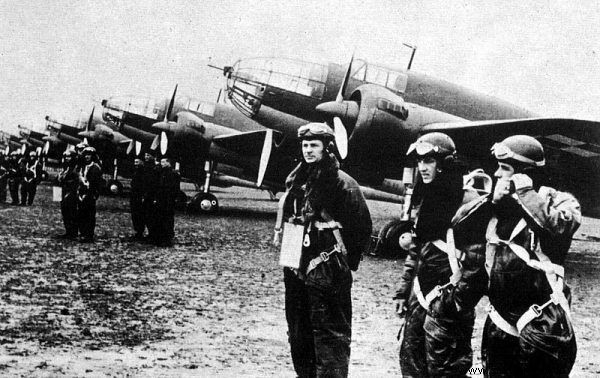
PZL.37 Łoś, Polish bombers produced in 1936-1939. First Air Regiment
Some strategic and political errors, which Forczyk noticed in his book, were already indicated many years ago by Jerzy Łojek in his epochal work Aggression 17 September 1939. It should be noted that the Polish historian prepared his dissertation on September in the years of communism, when access to, for example, German, British or American archives was not as easy as it is today. However, both these historians agree that one of the reasons for Poland's rapid defeat in 1939 was the disastrous communication system of the Polish Army, which disintegrated in the first days of the war. Firstly, at the division level, there was a general lack of short- and long-range radio stations, secondly, cable communication (telephone and telegraph) was quickly interrupted, thirdly, strong> ”That they could use later.
The General Staff has prepared new cipher keys, the so-called duplicates, but there were problems with their transfer to units, because the liaison planes carrying them were shot down by the German air force. Besides, duplicates soon fell into the hands of the Germans. The situation was aggravated by the absolute prohibition issued by Marshal Śmigły for contacting by radio or wire the commanders of neighboring units . To agree on the actions, they had to meet in person !!! The lack of radio stations and the disruption of communication networks already on the third day of the war had far-reaching consequences throughout the September campaign.
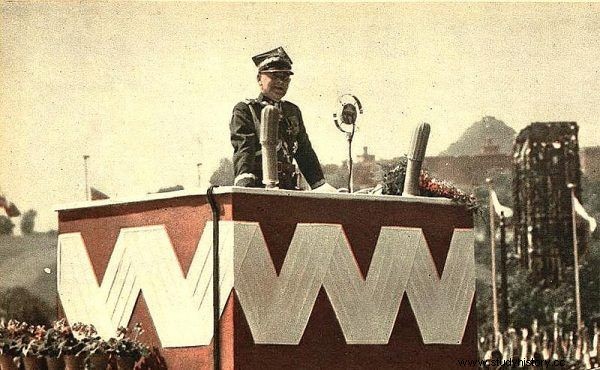
Edward Śmigły-Rydz during the ceremony in Krakow on August 6, 1939
In Warsaw, it was not known where the staffs of large units were located, so liaison planes with orders could not be sent to them. Jerzy Łojek pointed out that the resignation from the purchase of one destroyer of the "Błyskawica" type would allow the communication needs of the Polish Army to be fully satisfied. He noticed that "Błyskawica", "Burza" and "Grom" were of no use in September 1939, because they sailed quietly to English ports, which the German intelligence knew very well.
The lightning was gone in no time
Forczyk has similar reflections, who thinks that the defense of the Polish coast was disastrously prepared, and that operation "Peking", i.e. the withdrawal of our three destroyers to Great Britain, was not a "master tactical move", but a great mistake, as a result of which our state-of-the-art the ships did not use their guns and torpedoes to defend the Polish coast, but later defended the Norwegian and English coasts.
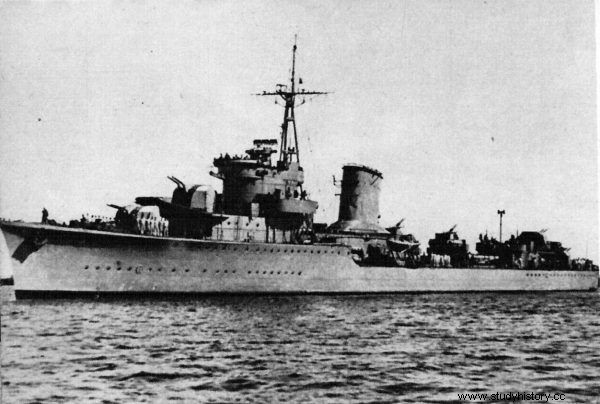
Destroyer ORP "Błyskawica" after returning to Poland in 1947
Forczyk also writes very critically about the role of five Polish submarines, the purchase of which was a huge financial effort for the reborn Polish State. Meanwhile, in September 1939, they did nothing, all the time hiding under the water and sailing further and further from their home ports, which they were theoretically supposed to defend. They did not carry out any offensive actions, did not even try to attack the antiquated and slow battleship Schleswig-Holstein! In Poland, the escape of ORP Orzel from the port of Tallinn, from where the ship sailed without maps to England, is considered a great success, and no one asks why the ship did not launch her torpedoes against the Kriegsmarine in September 1939.
Grounded Moose, Dangerous 7TP
Forczyk writes critically about the orders concerning the PZL37-Łoś bombers, which - although modern - were grounded for most of the September campaign, because there was no idea how to use them. The air commander, General Józef Zając, considered for some time the possibility of sending a few Elks to bomb the battleship Schleswig-Holstein, but eventually abandoned the idea for fear of losing these valuable machines.
Ultimately, Łosie and Karasie from the Colonel Władysław Haller's Bomber Brigade conducted about 60 flights bombarding German armored columns, but the Luftwaffe intercepted and destroyed as many as 37 bombers! The bombing and sinking, or at least serious damage to the great battleship Schleswig-Holstein, the location of which was known to Poles, would have great propaganda significance for the Polish Army fighting in the encirclement and for our western allies.
Forczyk believes that it is a common mistake of Polish commanders not to defend the crossings after the bridges have been blown up. Polish sappers usually managed to blow up bridges in front of the attacking German units, but the bridge and its surroundings were not later fired by cannons or even machine guns. This allowed the German sappers to operate calmly and rebuild bridges, move pontoon crossings, or look for fords in the river. As a result of such neglect, the broken bridge was an obstacle for the invader for a few hours at most, for a day at the most.
The Polish tanks did well in the September campaign, especially the most modern ones - the 7TP, which, once they appeared in the right place, were able to take an equal fight with any type of the German tank of that time, and the older ones:PzKpfw I and PzKpfw II deal severe losses. However, the mistake of the Polish command was to disperse armored weapons, instead of deploying tanks and tankettes in large groups on the most important sections of defense. Similarly, it was with aviation, Forczyk criticizes the dispersion of the air force and the assignment of fighter squadrons to individual armies, and then - already in the course of the fighting - the withdrawal of this order and the withdrawal of the aircraft at the disposal of the Border Guard to use them on a mass scale.
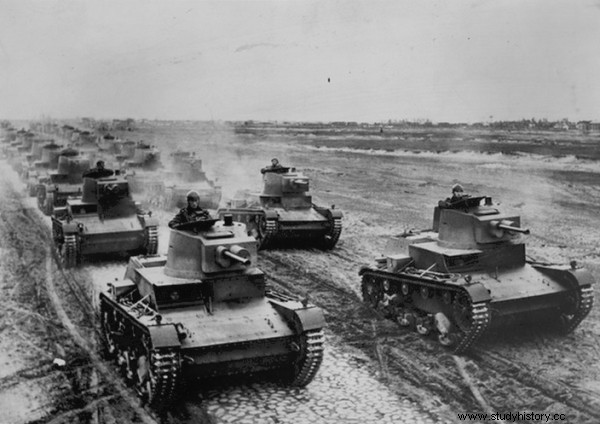
The Polish 7TP tanks were able to fight on an equal footing with any type of the German tank of the time
As a result of these chaotic actions and orders of Marshal Rydz-Śmigły, most of the army gave up and quickly lost their air force, only General Tadeusz Kutewka, commander of the "Poznań" Army, kept them, who simply did not obey this order, thanks to which he kept a dozen fighters and could later used during the offensive turning point known as the Battle of Bzura.
Describing the course and consequences of this battle, Forczyk praises the Polish Army for its ability to control the situation and prepare a counter-offensive in the event of a mass retreat and absolute air control of the German air force. He also notes that the 10-day Battle of Bzura was the largest and most successful Allied counter-strike conducted in the first two years of the war. By comparison, the French strike at Arras in May 1940 lasted four hours.
War crimes from September 1
Forczyk in his book does not spare the German side. He indicates several times examples that from the very first hours of the war, the Germans committed war crimes, attacking and murdering civilians, as well as shooting prisoners. This was done by the regular Wehrmacht units, not the SS units, which in the September campaign constituted less than 2 percent of the population. German forces and with regular Polish troops fought very ineptly. E.g. two battle groups of the SS "Deutschland" regiment failed to capture the village of Uniszki Zawadzkie near Mława.
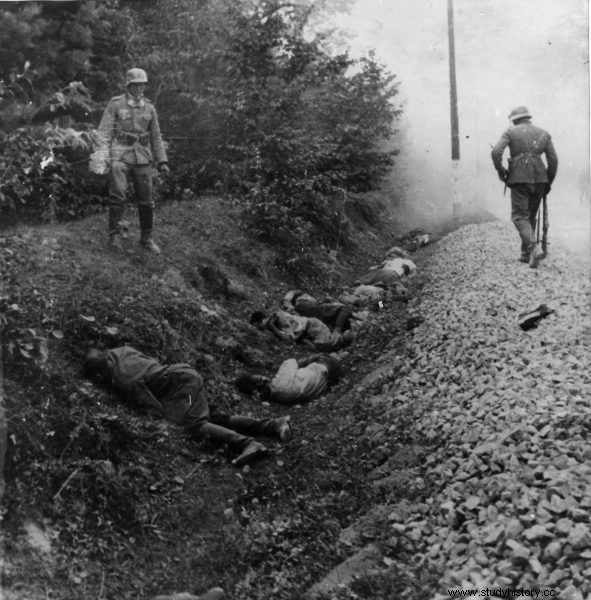
Execution of about 300 Polish prisoners of war by soldiers of the German 15th motorized regiment; Ciepielów, 9 September 1939
The author of "Invasion of Poland" also indicates examples of command ineptitude on the German side, because in the first half of September even the later famous generals:Guderian, Kempf, Kluge stayed for a long time with their elite units in front of the lines of Polish bunkers, shelters or well-prepared field positions. In this situation, the maneuver of two-sided flanking usually worked, but as it turns out, not all German commanders already mastered it. The Germans also made many stops on the banks of larger rivers, where Polish sappers destroyed bridges. The fact that the bridges were blowing up, quite obvious in war conditions, was apparently a surprise for the German staff officers. The bridge units were usually far to the rear and arrived too late. The Germans, however, learned from their mistakes and had already committed them in France by placing bridge engineers closer to the line of attack.
Among the many conclusions that can be drawn after reading Fall Weiss. The Invasion of Poland 1939 "is, inter alia, such that the territory of our country was a huge training ground for the Germans, where they tested their tactical and strategic assumptions in practice. They also improved those elements that could not be fully mastered in peaceful conditions, e.g. communication between land and air units and calling for support in the form of point bombardment on the front line.

They also learned to perform surprising maneuvers to circumvent and flank stubbornly defended positions or to send the strongest and best armed units to the points of contact of defense sections. All this was then used to improve and implement the "Blitzkrieg" tactic on all fronts in Europe and North Africa. Robert Forczyk, an American historian, also points us to a few heroes whose names should be more widely known in the country on the Vistula River. It could be, for example, Corporal Leonard Żłób, who destroyed 14 German tanks from his cannon at Mokra.
